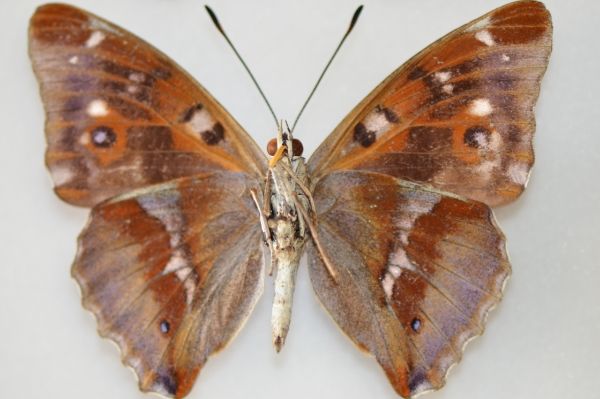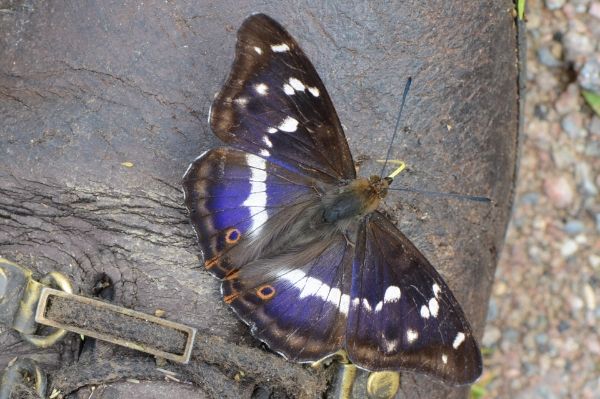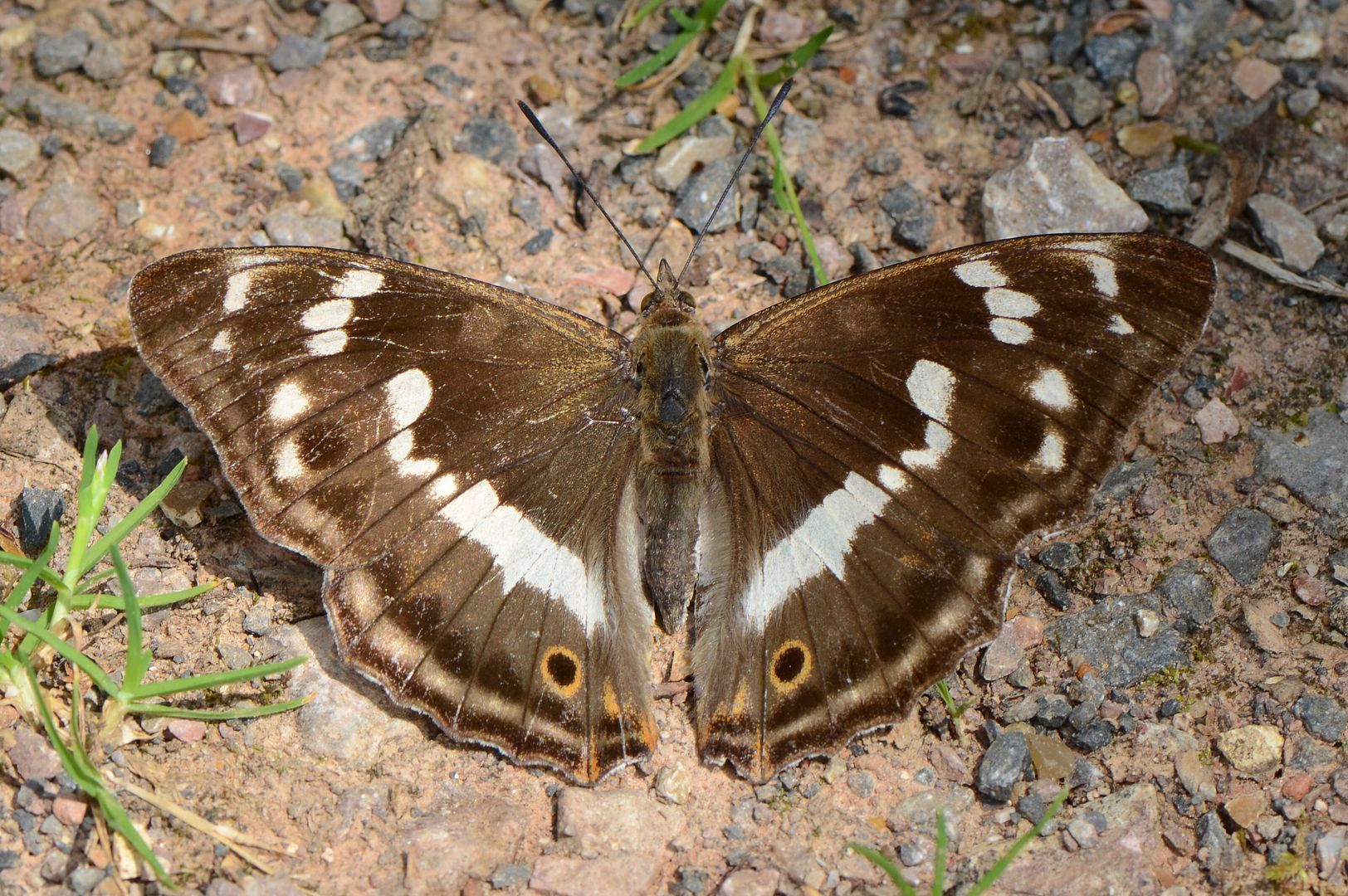|
|
Post by nomad on Jul 18, 2014 7:09:50 GMT -8
I have spent many hours looking for this butterfly and I have in the U.K, only ever seen three grounded males before my trip to the Midlands locality. Most of my brief sightings have been around the tops of the tallest oak trees.
|
|
|
|
|
|
Post by beetlehorn on Jul 19, 2014 3:26:40 GMT -8
Absolutely wonderful article, and great photos Nomad! Although I now live in the US, I can clearly recall encountering this species, and Apatura ilia in Germany when I was much younger. Both butterflies were always a thrill for me to see. I collected butterflies then more avidly than I do now, and remember just how difficult it could be to even get close enough for a successful capture. I just didn't have the patience or knowledge to do so with any kind of consistency. In response to your question as to the status of this species in other parts of Europe, I found a video that is in my opinion quite amazing. It contains footage of this grand species as well as others such as A. ilia (both forms), Limenitis populi, and I think I spotted Nymphalis polychloros. It seems the genus Apatura is very secure in this location, and was blown away at how many A. ilia were congregating there. I never witnessed anything like that in my early collecting years. I hope they are as numerous in other parts of the continent. Tom
|
|
|
|
Post by nomad on Jul 19, 2014 9:40:32 GMT -8
Hi Tom- I am pleased that you enjoyed the article with the images and many thanks for sharing the wonderful video. We would never get such a grounding of butterflies in the U.K. Oh, to be in that wood in Germany. What a really marvellous sight. We do not have A. ilia and for some unknown reason N. polychloros became extinct : No one is sure why. L. populi is such a wonderful large butterfly. Those countries such as Germany-France must consider themselves very lucky to have such a large butterfly fauna compared to our islands. I really must get across the channel and see these displays for myself, if that is I can ever find them or be lucky with the weather. While it's a great hobby to collect butterflies and my passion is those from the New Guinea region, I feel it is important not to lose any species and the work of the old master BB should be welcomed and greatly admired.  He was for sure, our greatest ever Apatura iris expert and there has been and still is, quite a few. Peter. |
|
|
|
Post by beetlehorn on Jul 19, 2014 10:39:48 GMT -8
Yes, thanks also for the history lesson of this marvelous butterfly. Here in the US we have some members of this group, the Asterocampa's. They however lack the size and purple flush of the Apatura's. The behavioral, and flight patterns are the same though, including a similar patterning on their wings. Two years ago I made a trip to the Sonoran desert in Arizona where I encountered Asterocampa leilia, and Asterocampa antonia, which has been lumped together with A. celtis. They are a joy to see and collect, but A. iris and A. ilia are more impressive. I wonder how BB would have reacted when seeing them? Tom
|
|
|
|
Post by nomad on Jul 19, 2014 13:04:01 GMT -8
Yes, those Asterocampa do look very much like our Apatura without the purple sheen. I like the common name of A leilia= Empress leilia. Whenever BB encountered A. iris, it gave him a great thrill, which he mentions in his books, none more so when they circle around you in a woodland ride to investigate and those glorious wings flash purple when they hit the right light. Peter.
|
|
Deleted
Deleted Member
Posts: 0
|
Post by Deleted on Jul 19, 2014 16:40:52 GMT -8
Nomad,
Great thread. Thank you so much for taking the time to write it.
Joe |
|
|
|
|
|
Post by nomad on Jul 19, 2014 22:17:07 GMT -8
Nomad,
Great thread. Thank you so much for taking the time to write it.
Joe Thanks Joe, I enjoyed writing it, but nothing quite prepared me for that weekend among A. iris in Fermyn Woods. That time, will live long in the memory.  Peter. |
|
|
|
Post by nomad on Jul 20, 2014 9:02:57 GMT -8
There has been much confusion over the naming of Apatura iris aberrations. Ab iole - Denis & Schiffermuller 1775, is a great rarity where there is a total absence of forewing white markings. There is one specimen of ab iole in the BMNH. Ab iolata - Cabeau 1910- the ab semi-iole of Frohawk 1938, has also been wrongly applied to certain aberrations. The original description of ab iolata is of reduced forewing markings but with a NORMAL white hindwing band. This first specimen shown here is probably ab iolata, but the others with the faint hindwing band may belong to another named aberration. They may be ab afflicta- Rev Cabeau 1910?? The latter along with ab lugenda - Rev Cabeau 1910, where the forewing spots are much reduced, but with the white hindwing band completely missing were photographed in Fermyn woods during 2012.  ab iolata |
|
|
|
Post by nomad on Jul 20, 2014 9:24:14 GMT -8
|
|
|
|
Post by nomad on Jul 20, 2014 9:35:46 GMT -8
Here are some verso aberrations. The first with the two different size wings looks very strange, the second specimen is a very beautiful aberration .   |
|
|
|
Post by nomad on Jul 20, 2014 9:47:18 GMT -8
|
|
|
|
Post by nomad on Jul 20, 2014 9:51:50 GMT -8
I had to add this: A. iris on my well worn hiking boot at Fermyn woods, wonder what he is after ?   |
|
|
|
Post by nomad on Jul 24, 2014 9:51:21 GMT -8
I have been quite lucky this year finding A. iris. Yesterday I visited the wooded Weald of Surrey. I only saw a couple walking their dogs and one horse rider all day - smashing. An Apatura iris female swooped down from a oak and began flitting in and out of the Sallows egg-laying and looking very large for a European butterfly and then she was lost from view. A few minutes later she circled me and for a few seconds landed on the track before disappearing up into the boughs of the oaks. The females of A. iris are usually quite hard to find, but a grounded female is quite a sighting. Here she is.   |
|